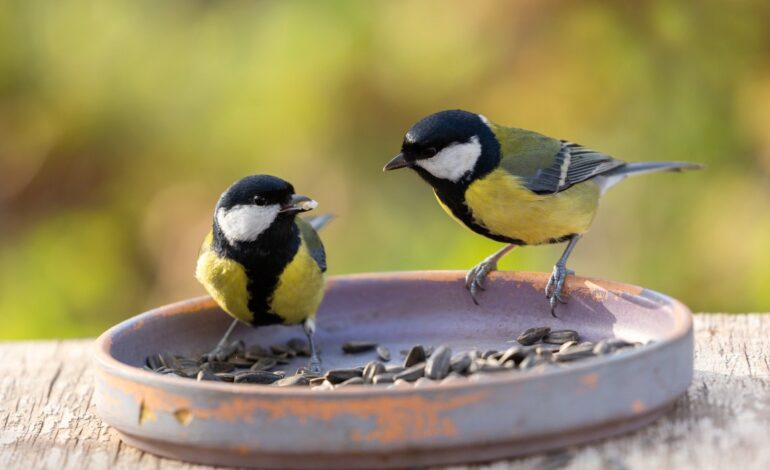Great Tits Exhibit Complex Social Dynamics in Breeding Habits

Research has unveiled intriguing insights into the social dynamics of the great tit, a small, yellowish songbird prevalent in European woodlands. Traditionally viewed as monogamous during the breeding season, new findings indicate that great tit pairs exhibit a range of relationship patterns that extend beyond the typical breeding cycle. This study, published on July 30, 2023, in the journal Proceedings of the Royal Society B, reveals that not all pairs separate after raising their young.
According to the research led by Adelaide Daisy Abraham, a behavioral ecologist at Oxford University, the phenomenon referred to as “tit divorce” may stem from intricate social interactions developed during and after the breeding season. Many great tit couples remain together throughout the winter, rekindling their bonds in spring. Conversely, some pairs begin to drift apart as early as late summer, ultimately separating during the fall and winter months.
Abraham emphasized the complexity of these relationships, stating, “Our results show that bird relationships are far from static. Divorce appears to be a socially driven process, unfolding over time.”
To gather data, the researchers tracked individual great tits located in woodlands near Oxford. Each bird was fitted with a small radio tag that notified the team whenever the birds visited one of several feeders established for the study. Over a span of three years, the researchers monitored social interactions among the great tits, noting which birds associated with each other and the frequency of these interactions.
Findings indicated that the pairings of great tits were not as random or limited to geographical proximity as previously believed. While initial mating might occur due to proximity, the decision to remain together is influenced more by social dynamics throughout the season. The study noted that signs of separation emerged as early as late summer and intensified throughout the winter.
“Those divorcing birds, from the start, are already not associating as much at the feeders as the faithful birds,” Abraham explained in a statement to NPR. “That only increases as the winter goes on.”
Despite these revelations, the study did not provide a definitive explanation for the reasons behind the separation of some tit couples. Questions remain regarding whether divorced birds that find new partners are as successful in mating, if they display different parenting strategies, or if competition among birds influences these outcomes.
Future research is anticipated to delve deeper into these complexities. Josh Firth, a senior author of the study and behavioral ecologist at the University of Leeds, remarked, “Following these individual birds across seasons and over many years allows us to see how relationships form and break down in nature in a way that short-term studies wouldn’t.”
Abraham added, “There is actually a lot more going on in those flocks of birds out your window than you think there is.” This research opens doors to understanding the social behaviors of birds, highlighting the importance of exploring non-human intelligence and relationships within species. The intricate social lives of great tits serve as a reminder of the complexity and fascination present in the natural world.






